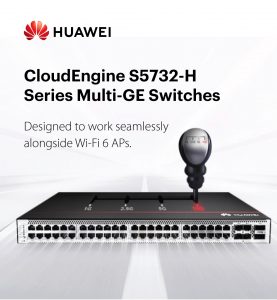Organisations are expected to embrace automation and rely on more solution-centric technology in 2022. Tracy Yeo, country lead for Vietnam at Zebra Technologies Asia-Pacific, talked with VIR’s Bich Thuy about technology trends and how the company can help Vietnamese firms improve competitiveness and productivity.

| Tracy Yeo, country lead for Vietnam at Zebra Technologies Asia-Pacific |
This year is considered a year of economic recovery and growing technology applications in Vietnam. What are the possible tech trends this year and beyond?
Small- and medium-sized businesses (SMB) play a major role in Vietnam, accounting for 98 per cent of all enterprises, 40 per cent of GDP, and 50 per cent of employment.
In 2022, SMBs will continue pushing to level the playing field. If they can prove they are more reliable than larger competitors, they can earn the trust and business of customers and stand out from the crowd.
Globally, automation is allowing enterprises to create different types of work environments that free people from mundane roles. There are many different models of automation that are emerging as we head into 2022.
Zebra is a leading innovator that has been empowering the frontline of businesses for more than 50 years. We invest up to 10 per cent of our annual revenue in research and development ($567 million in 2021), and we have also expanded our product portfolio through several acquisitions in recent years.
Zebra expects technology maturation to reach new levels. Although businesses of all sizes are tackling labour shortages, SMBs can increase the output of their workforce more quickly to keep up – if they can automate some workflows, remove all manual actions, and define simple, repeatable processes.
In fact, their smaller size translates into greater agility gains and faster returns on automation investments. They will improve their workflows by leaps and bounds, literally skipping steps that larger companies had spent years taking in their technology migration journeys.
How can Zebra Technologies support businesses globally and those in Vietnam with automation solutions to increase operational efficiency and competitiveness?
Vietnamese enterprises need to transform to stay relevant today. For instance, consumers today have seemingly insatiable demands for 24/7 product search and purchase, which has upended the supply chain, impacting manufacturers, retailers and the warehousing operations that serve their needs. This on-demand economy has been further accelerated with COVID-19 because of city lockdowns and social distancing measures.
SMBs which tend to have limited budgets for technology upgrades and may think automation means high upfront investment costs, which isn’t true.
For instance, there are five phases of warehouse modernisation before they can reach full maturation with the ability to fully sense, analyse and act on their data to unlock opportunities for productivity, accuracy, and efficiency and overcome the challenges within the warehouse operations. Therefore, it is important that companies first identify the phase they are in.
If companies are in the foundational stages of a digital transformation, they should consider introducing basic and affordable technology like data capture, analysis, and distribution workflows, which can already make big difference in terms of efficiency and accuracy compared to manual methods like pen and paper.
The best part is even smaller companies have the financial means and resource capacity to upgrade mobile hardware and workflow software, and such investments often improve the bottom line rather than deplete it.
For example, in the manufacturing industry, Zebra’s automation solutions power transformative outcomes at the edge by pairing man with machine like never. This liberates front-line workers from mundane tasks. It also helps businesses gain enterprise visibility to make sharper decisions fueled by data-driven intelligence, without impacting their existing infrastructure.
Autonomous mobile robots (AMR) can be introduced to move any type of payload – from pallets to cases – without taking front-line workers away from important tasks.
But automation is not just about robots. Another example of automation is Zebra FulfillmentEdge, which is poised to turn a legacy warehouse management system into a 21st century brainpower that makes full use of the businesses’ data, real-time location of their front-line workers and task priorities, without causing major changes to their backend systems.

| Automation is now crucial in the manufacturing industry |
Cost efficiency is one of the top issues among businesses. Do automation solutions cost businesses much?
It’s all about thinking big and starting small. But we need to start somewhere. For software, businesses need to find the appropriate one that fits their key mission-critical processes and consider subscribing to it rather than purchasing it.
For hardware, they should not just go for the one with the lowest price. What businesses should also consider is whether the product they are buying is from a reputable brand and if there’s any aftersales support if it breaks down.
Additionally, it is crucial that businesses evaluate the feasibility of introducing automation solutions from a total cost of ownership perspective and not just based on the initial upfront cost. One of the most important perks of automation is reducing human errors.
Human error is the leading cause of data loss in businesses. In fact, bad data alone costs US businesses more than $3.1 trillion a year, according to a report from IBM.
Automated systems make processes faster and more accurate by reducing human errors, which translates to greater operational costs savings
Could you share some use cases for automation solutions? And what lessons should businesses in Vietnam learn from them?
Zebra works closely with more than 10,000 partners in 100 countries to provide businesses across varying sectors with better visibility through industry-tailored solutions that intelligently connect people, assets, and data to help them make business-critical decisions.
In Vietnam, a local automotive manufacturer wanted to integrate their existing enterprise resource planning system with their warehouse management and production line automation workflows. As such, they digitalised their operations by introducing new Zebra scanners, printers, and mobile computers.
Elsewhere in APAC, these customers achieved better results with Zebra’s solutions:
- Adore Beauty achieved a 30 per cent productivity increase in its warehouse, realised a 50 per cent reduction in cost to fulfil customer orders, and improved its outbound order accuracy rate to 99.9 per cent.
- Mobis achieved a 15 per cent productivity increase in its warehouse operations and an additional 39 per cent reduction in errors.
- Shenzhen Gift managed to cut time spent on receiving goods by 50 per cent and increased its inventory accuracy by 40 per cent.
What are the top priorities of the company in the local market in 2022 and beyond to tap into its growth potential?
In 2021, Vietnamese enterprises were under a lot of pressure due to the pandemic. Zebra is proud it could help local businesses continue to enjoy success through our solutions despite the challenges.

| Zebra’s service centre in Vietnam |
Zebra recently opened its first service centre in Vietnam, which has brought greater convenience to our local customers and vastly reduced their business downtime.
At the regional level, we launched our new APAC headquarters which incorporates advanced facilities that serve as an invaluable resource for Zebra and our partners in the region (including Vietnam) as we jointly tackle business challenges faced by enterprises in this region.
With Vietnam’s economic growth expected to accelerate to 5.5 per cent in 2022, it remains a key market for Zebra in APAC.
Nguồn: vir.com.vn








